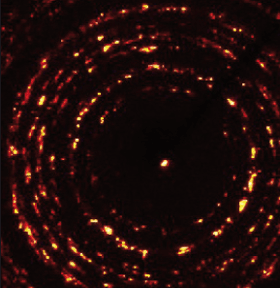



Improving Egg Safety through Genetics: Eggshell Quality
A combination of approaches have increased our understanding of the genetics and physiology of the formation of the eggshell, according to the final scientific report from the EU group, Sustainable Animal Breeding (SABRE) subtitled 'Cutting Edge Genomics for Sustainable Animal Breeding'.In this project a combination of approaches have increased our understanding of the genetics and physiology of the formation of the eggshell. A number of tangible tests and assays have been delivered which will contribute directly to genetic improvement of egg quality and hence safety.
Why Eggshell Quality?
Eggs are an excellent balanced source of nutrition and are widely accepted. However, poor eggshell quality leads to increased numbers of cracked or damaged eggs. Cracked eggs encourage bacterial infections and are therefore more likely to cause Salmonella outbreaks than intact eggs. If there were 10 per cent fewer cases of human Salmonella infection across the EU, it would save about €400 million per year.
The eggshell is also critical to the consumers’ impression of the product. Cracked and/or damaged shells as well as increasing risk from pathogens harm the image of the product. Egg quality is also one of the primary concerns for the breeder and farmer of laying hens. Egg quality is important to them because it is important to the consumer and because good egg quality contributes to the profitability of the commercial hen and to its marketability.
Egg breakage causes direct waste but most importantly it reduces the lifespan of laying hens. Increasing the period over which flock egg quality remains high would have impressive effects in environmental impact over the life cycle of production.
Research for Stronger Eggs

The project sought (1) to measure better aspects of shell quality that contribute to its safety and (2) to identify genetic markers which are associated with existing measurements of egg quality. The researchers also studied the shell gland, i.e. the structure where the egg is formed, to understand this process better.
Measurement Tools
The cuticle is a protective coating which prevents bacterial penetration through the gas exchange pores in the eggshell. So far, it has never been quantified. A method was established using dyes and reflectrometry, which allowed the researchers to conclude that the degree of cuticle coverage was moderately determined by the genetics of the hen that laid it. They also concluded that the variation observed in the cuticle was correlated with bacterial penetration of the shell.
The eggshell is predominately composed of calcium carbonate crystals. Crystal size determines the properties of materials so the group determined size using X-ray diffraction. It turned out that crystal size is highly dependent on genetics of the hen that laid it. Crystal size appears to be an important component of determining the shell thickness which is a major part of shell strength.
Genetic Markers
By using crosses between commercial pure line hens, the researchers identified regions of the genome that controlled shell strength on chromosome 2, 3, 6, 14 and Z. To be able to find genetic markers, these five chromosomes were densely genotyped. The markers with the highest significance values were tested on pure line hens and found to have significant associations with shell quality traits. This means that pure line hens can be selected using these markers.
Sustainable Breeding
Both new tools to measure aspects of eggshell structure which underlie egg safety and quality, as well as molecular tools to improve the efficiency of selection have been developed. This will allow breeders to select hens that lay stronger eggs that are less susceptible for bacterial infections.
Further Reading
| - | You can view the previous article from the SABRE report by clicking here. |
February 2012








